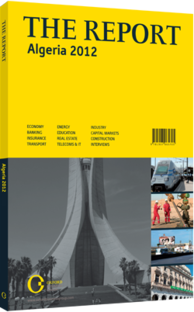Mohammed Laksaci, Governor, Bank of Algeria, on the stability of the domestic banking sector

In addition to reforms made to the country’s monetary policy framework, the new legal measures relating to money and credit taken in 2010 (order no. 10-01 of August 26, 2010) have strengthened the legal anchoring of financial stability as an explicit mission of the Bank of Algeria.
The measures taken in 2008 regarding the increase in minimum capital for banks and other financial institutions, as well as the regulations promulgated in 2011 regarding identification, management and control of liquidity risk, and the update of measures related to the internal control to assign the banks and financial institutions additional categories of risk to be closely monitored are all part of the process of strengthening the operational framework for financial stability. Bolstering the database of the public registry additionally contributes in this regard.
The progressive increase in the excess liquidity of the banking system in 2010-11 that spread widely among banks has fortified the stability of the banking system. The decline in non-performing loans (NPLs) of public banks on the de-facto private groups, largely provisioned, added further reinforcement to the longevity of the banking system.
Public and private banks meet the requirements under the prudential regulation in force. At the end of 2011, the capital adequacy ratio of banks was 23.7%. The tier one ratio also remained high at 17%. To a large degree, these two factors satisfied the latest recommendations of the Basel Committee that were intended to cover risks in case of a downturn in the economic cycle (Basel III standards).
The liquidity of banks, when compared to total assets as well as to total short-term liabilities, is comfortable. The first ratio setting was at 47.5% and the second was at 103.7% for 2011.
The profitability of the Algerian banking sector (before taxes on profits and exceptional operations) is very good. Indeed, in spite of the consequent increase in the minimum capital of banks in 2009, the return on equity remains significant, although slightly lower (24.6% in 2011 versus 26.2% in 2010) as banks continue to strengthen their reserves to better face the possible increases in banking risks.
The return on assets is high as well. In both 2010 and 2011 it stood at 2.1%.
Taking into account the net profits (after taxes), the profitability of banks remains comfortable with the return on equity ratio accounting for 19% and the return on assets ratio for 1.6%.
With regards to the indicators listed above, the situation of banks operating in Algeria is close to or even better than that observed in banks in many emerging countries. Nevertheless, some public banks still continue to support a relatively high level of NPLs to private groups. In fact, these are not recent loans. Rather, these are loans that were granted before 2007 and are largely provisioned.
To preserve its achievements in terms of the stability of the nation’s banking sector, the Bank of Algeria, as the supervisor of banks and financial institutions, has redesigned its procedures for bank control in order to be more in line with other global players and avoid possible risks.
It has also developed a new methodology, designed to match international standards, to evaluate the country’s banks and financial institutions. This system is known as the “system of banking notation” (system de notation bancaire) and it allows the assessment of the financial and prudential situation of Algeria’s banking institutions to be refined.
Additionally, the new procedure permits the earlier detection of potential vulnerabilities of individual institutions as well as of the banking system in general, ensuring greater consistency.
Furthermore, the Bank of Algeria has also established a systematisation of stress tests with the aim to strengthen its capacity to detect, at the earliest date, any possible increases in risks that would disturb or harm the stability of the banking sector.
You have reached the limit of premium articles you can view for free.
Choose from the options below to purchase print or digital editions of our Reports. You can also purchase a website subscription giving you unlimited access to all of our Reports online for 12 months.
If you have already purchased this Report or have a website subscription, please login to continue.

